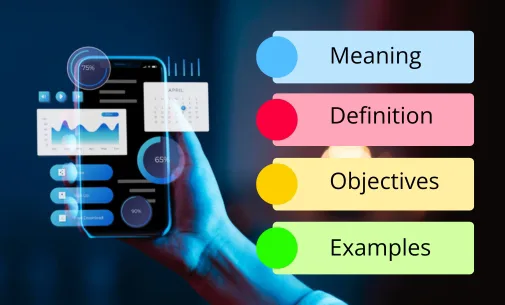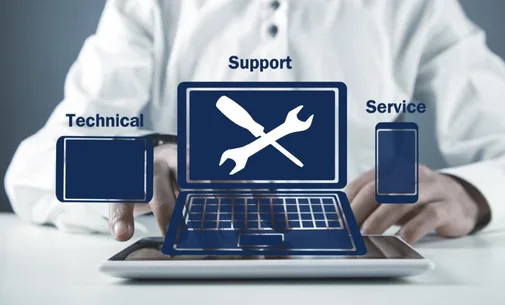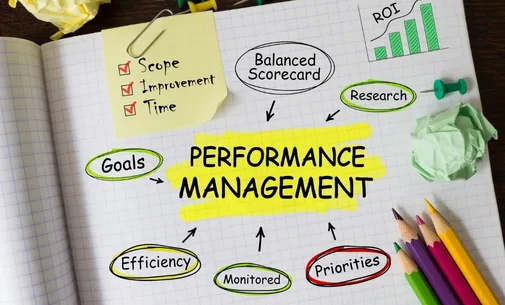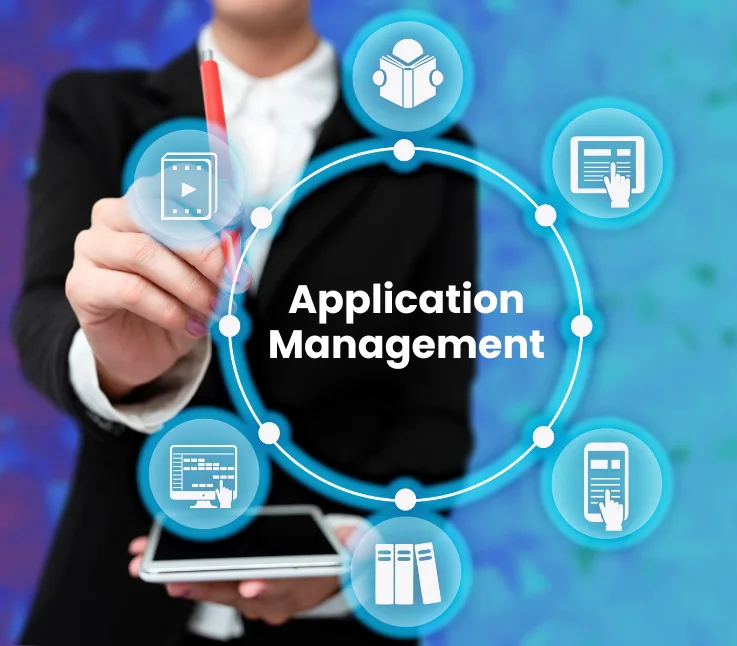- What is Application Management?
- What is Application Management in AMS
- Definition of Application Management
- Objectives of Application Management
- Example of Application Management
- The Evolution of AMS
- AMS Market Trends
- The Future of AMS
- Benefits of Application Management
- AMS Benefits for Large Enterprises
- Why SMBd Use AMS?
- AMS Benefits for Consumer Apps
- Principles of Application Management
- Best Practices for Application Management
- Application Management Vs. Application Governance
- Application Management vs. IT Governance
- How Application Management Work
- Scope of Application Management
- Types of Application Management Tools
- Top 5 Application Management Tools
- Application Management Strategies
- Challenges and Risks of AMS
- How to Prepare for the AMS Challenges
- Which Industries Drive AMS Support?
- What are application management Services?
- How To Choose an AMS Provider
- Tips to Consider Before Choosing Your AMS
- Conclusion
Are your competitors already using Application Management or Managed Application Services (AMS)? It can be a game-changer to revolutionize how companies tackle the high costs and hefty workload of maintaining IT applications.
In this article, we are going to discover everything you need to know about Application Management and Application Managed Services (AMS).
I have researched and analyzed application management market trends and many other insights from the most popular scholarly article and research papers. For better understanding, I have presented all the information in different sections.
Please read this complete application management guide to learn everything you need to know about application management services (AMS).
Explore Related Topics:
Whether you are a business person or general knowledge seeker, this AMS guide won’t disappoint you. Let’s begin.
| Segments | Names |
|---|---|
| Section 1: | About/Concepts |
| Section 2: | Past, Present, and Future |
| Section 3: | Benefits |
| Section 4: | Key Principles |
| Section 5: | Differences |
| Section 6: | Processes and Methodologies |
| Section 7: | Strategies, Challenges, and Risks |
| Section 8: | Industry |
| Section 9: | Services |
| Section 10: | Hiring a Company/Vendor |
| Section 11: | Recommendations for Business Leaders |
| Section 12: | FAQs |
Key AMS insights:
- Market Growth: The AMS market is expanding rapidly as more businesses seek efficient, outsourced application management solutions.
- Outsourcing Trends: AMS outsourcing rises to focus on core business.
- Scope of AMS: AMS manages core applications like CRM, ERP, and industry-specific tools.

Section 1: About

In this sections, we will try to understand application management concepts by analyzing what it is, definition, objectives, and different cases (examples).
What is Application Management?
Application management is a comprehensive framework that involves overseeing the lifecycle of an application, from its initial development and deployment to its ongoing maintenance and eventual retirement.
This framework ensures that applications operate efficiently, securely, and effectively support business objectives.
First, let’s see what is application management in AMS.
What is Application Management in AMS or Managed Application Services?
It is the core function of Application Management Services (AMS) and referred to as Managed Application Services.
AMS providers are external companies that handle the day-to-day upkeep, performance, and optimization of your organization’s applications.
Here’s a breakdown of what Application Management within AMS entails:
Monitoring Application Health

First of all, AMS providers continuously monitor your applications for performance issues, errors, and potential outages.
Maintaining Functionality

They perform regular maintenance tasks to ensure applications run smoothly and efficiently. This might include software updates, bug fixes, and security patching.
Optimizing Performance

Additionally, they look for ways to improve application speed, scalability, and overall user experience.
User Support

Some AMS providers also offer user support services. They help end-users with any issues they encounter while using the applications.
Definition of Application Management
Certainly, the goal of Application management is to ensure applications are reliable, secure, and aligned with organizational objectives. Let’s find out its objectives from the definition.
Here are some definitions of Application Management:
“AMS is a method to achieve high levels of service quality and application availability. This is achieved by minimizing downtime and ensuring applications function as intended.“
Studies delve into optimizing resource allocation within AMS.
One example explores using clustering techniques to group service requests based on skill sets, allowing for efficient assignment to qualified personnel.
Objectives of Application Management
Application Management involves a set of processes and functions aimed at ensuring that applications are effectively deployed, maintained, and optimized throughout their lifecycle.
The objectives of Application Management can be summarized as follows:
- Executing applications that are well-organized, resilient, and sophisticated.
- Making sure that the company has the appropriate resources to achieve its business goals.
- Keeping engineers responsible for application maintenance requires particular expertise.
- Analyze and resolve any technological breakdowns that occur.
Example of Application Management or Managed Application Services
Application Management or Managed Application Services play a crucial role in ensuring that business applications run smoothly, securely, and efficiently.
These services involve the comprehensive management of software applications, from initial deployment through ongoing maintenance and optimization.
Below are some examples that highlight how these services are implemented across different types of applications:
Enterprise Resource Planning (ERP) System Management

A company implements an ERP system to integrate and manage its core business processes, including finance, human resources, supply chain, and customer relationship management.
The application management service provider is responsible for the continuous monitoring, updating, and optimization of the ERP system to ensure seamless operation and performance.
Service Scopes:
- Keeping the system secure and up-to-date with regular updates and patches.
- Identifying and resolving any issues promptly
- User support and training to ensure employees can effectively use the system.
- Customization and integration with other business applications.

Customer Relationship Management (CRM) System Management
A business uses a CRM system to manage customer interactions, sales, and service operations.
The managed application service provider takes charge of maintaining the CRM system, ensuring it meets the evolving needs of the business and provides a smooth user experience.
Service Scopes:
- Data migration and integration with existing systems.
- Ongoing maintenance and troubleshooting to prevent downtime.
- Implementation of new features and enhancements based on business requirements.
- Security management to protect sensitive customer data.
E-Commerce Platform Management

An online retailer relies on a complex e-commerce platform to handle transactions, inventory management, and customer service.
So, the application management service provider manages the platform, ensuring high availability, scalability, and security.
Service Scopes:
- 24/7 monitoring and incident management to ensure the platform is always operational.
- Tuning regular performance and scalability adjustments to handle traffic spikes during peak shopping periods.
- Implementation of security measures to protect against cyber threats and ensure PCI compliance.
- Continuous updates and enhancements to improve user experience and add new features.
These examples illustrate how application management services can be tailored to different types of applications, ensuring they operate efficiently, remain secure, and continue to meet the needs of the business and its users.
Section 2: Past, Present, and Future

To understand application management, we should go through its evolution, current market trends, and future scopes. So, this section will be exploring the past, present, and future of application management or Managed Application Services (AMS).
The Evolution of AMS or Application Management Services
Pinpointing an exact origin for Application Management Services (AMS) is tricky.
It likely emerged gradually alongside the increasing reliance on business applications in the latter half of the 20th century.
The concept of Application Management Services (AMS) has evolved significantly over time, shaped by technological advancements and changing business needs.
AMS originated from the basic necessity of managing and maintaining software applications, but it has grown into a comprehensive service that encompasses a wide range of activities, including optimization, security, and strategic alignment.
The need to manage complex software systems grew as businesses became more dependent on them.
IT departments struggled to keep up with the demands of maintaining and upgrading applications.
Third-party vendors saw an opportunity to offer specialized expertise in application management.
These factors likely led to the development of AMS as a distinct service offering sometime in the 1980s or 1990s.
The origin of Application Management Services (AMS) is rooted in the early days of IT maintenance and has evolved through several key phases, including the rise of outsourcing, the formalization of AMS practices, and the integration with ITSM frameworks.
Besides the ongoing advancements in technology, particularly cloud computing and AI, continue to shape the future of AMS, making it an essential component of modern business strategy.
Let’s understand what are the recent trends of AMS (Application Managed Services):
Application Managed Services Market Trends
This growth is driven by the increasing need for organizations to focus on core business competencies by outsourcing application management, which includes Customer Relationship Management (CRM), Enterprise Resource Planning (ERP), and other industry-specific applications.
Driving Factors of Application Management

Cybersecurity:
As digital transformation accelerates, the need for robust cybersecurity measures is becoming a top priority.
Managed application security services help businesses mitigate cyber risks through advanced tools, continuous monitoring, and proactive threat management.
Operational Efficiency:
Outsourcing application management allows companies to reduce operational costs and improve efficiency by leveraging the expertise of MAS providers.
This approach also offers flexibility and scalability to handle varying workloads and technological changes.
Evolving Service Models:
The AMS market is also witnessing an evolution in service delivery models.
The hybrid delivery model, where managed service providers (MSPs) work collaboratively with other partners and clients’ IT teams, is becoming more prevalent.
This model enhances service quality and customer outcomes by combining diverse expertise and resources.
In summary, the AMS market is on a robust growth trajectory, fueled by the increasing complexity of IT environments, the need for enhanced cybersecurity, and the drive for operational efficiency.
Businesses across various sectors are adopting managed application services to stay competitive and focus on their core activities while ensuring their IT infrastructure is secure and efficient.
The Future of Application Managed Services:
Custom software programs and corporate apps have become increasingly popular in recent years.
This increase is due to the growing need for customized solutions that address unique company needs.
As a result, there is an increased need for specialist Application Managed Services.
The complexity of maintaining mission-critical programs highlights the significance of taking a methodical and systematic approach to managing their dependencies and protecting against vulnerabilities.
The expansion of the AMS industry may be due to a variety of causes, including the increasing acceptance of cloud-based solutions, the incorporation of Artificial Intelligence (AI) into operational frameworks, and the necessity for effective administration of complex application ecosystems.
Despite the promising future, various issues may influence organizational adoption of AMS, which we shall investigate one by one.
So, what challenges small, medium, large enterprises are going to face to adopt Application Management Services?
In this application management guide we will be exploring future challenges and the overcoming solutions of Application Management in AMS.
Future Challenges in Application Managed Services:
As technology continues to evolve at a rapid pace, the landscape of Application Managed Services (AMS) faces a myriad of upcoming challenges.
This critical sector, essential for maintaining and optimizing digital systems, confronts a future shaped by several key factors.
These factors include:
- Cyber Resilience
- Cloud Adoption
- Remote Workforce Productivity
- Regulatory Concerns
- IT Talent Shortage
- Customer Retention
Cyber Resilience

As digital technology advances, so do cyber threats. It’s crucial for AMS frameworks to have strong cybersecurity.
Outdated software patches and configurations can expose systems to attacks and data breaches.
AMS providers should prioritize regular updates, effective patch management, and robust cybersecurity protocols to prevent these risks.
The projected costs of cybercrime highlight the urgency of fortifying defenses and implementing proactive security strategies.
Cyber resilience, including threat detection, incident response, and continual adaptation, is critical for safeguarding AMS operations.
Cloud Adoption

The growing demand for cloud solutions creates a skill gap for MSPs. IT decision-makers struggle due to limited expertise in adopting cloud technologies, stressing the need for focused training programs.
Remote Workforce Productivity

The transition to remote work presents productivity hurdles, as many remote employees contend with burnout. AMS providers must devise inventive approaches to uphold productivity.
This could entail adopting adaptable work policies, nurturing a supportive workplace atmosphere, and harnessing technology to enhance remote teamwork, all aimed at preserving workforce effectiveness.
Regulatory Concerns

The changing regulations pose challenges for AMS frameworks. AMS providers must stay proactive in staying compliant by staying updated on legal changes, establishing flexible frameworks, and seamlessly integrating compliance into their services to meet various regulatory requirements.
IT Talent Shortage

The shortage of qualified IT professionals directly affects service delivery in AMS. Overcoming the issues identified in the Global Knowledge IT Skills and Salary Report requires innovative approaches to acquiring and retaining talent.
It is crucial for AMS providers to invest in training initiatives, cultivate a culture of continuous learning, and explore diverse talent sources.
These efforts are essential for effectively closing the IT skills gap and satisfying increasing customer requirements.
Customer Retention

Client satisfaction is crucial for profitability as it enhances customer retention rates. This underscores the importance of AMS strategies that prioritize clients.
Building strong relationships, providing personalized services, and maintaining proactive communication channels are essential for retaining clients in a competitive AMS environment.
AMS now covers an organization’s entire application IT landscape, but dissatisfaction persists due to unfulfilled promises in contracts.
Hence, AMS should align vendor and client goals to address contract gaps together.
How to overcome the Future Challenges in Application Managed Services
Overcoming the future challenges in Application Managed Services (AMS) requires a proactive and strategic approach. Here are some key steps:
Embrace Emerging Technologies:
Stay ahead by integrating emerging technologies like AI, IoT, and blockchain into AMS offerings.
This can enhance efficiency, improve security, and provide innovative solutions to clients.
Enhance Security Measures:
With cyber threats on the rise, prioritize robust security protocols.
Invest in advanced cybersecurity tools, conduct regular audits, and ensure compliance with data protection regulations to build trust with clients.
Optimize Scalability and Flexibility:
Design AMS solutions that can scale quickly and adapt to changing client needs.
Implement agile methodologies and cloud-based infrastructures to enhance flexibility and responsiveness.
Focus on Customer Experience:
Implement client-centric strategies such as personalized services, proactive communication, and quick issue resolution.
Building strong relationships and understanding client expectations can lead to higher satisfaction and retention rates.
Address Skill Gaps:
Invest in continuous training and development for your AMS team.
Stay updated with industry trends and foster a culture of innovation to attract and retain top talent capable of handling future challenges.
Align Goals and Expectations:
Clearly define expectations and outcomes in AMS contracts.
Regularly review and communicate progress to ensure alignment between vendor and client objectives.
Aditionally, address any gaps or discrepancies promptly to maintain trust and satisfaction.
Monitor Regulatory Changes:
Stay informed about evolving regulatory requirements that impact AMS.
Adapt your services and processes accordingly to ensure compliance and mitigate risks for both your organization and your clients.
Promote Collaboration and Partnership:
Foster a collaborative approach with clients and stakeholders.
Encourage open communication, gather feedback regularly, and iterate on your AMS offerings based on client insights and industry best practices.
Section 3: Benefits

In this section, we delve into the myriad benefits and advantages that effective application management brings to organizations. From enhancing operational efficiency to improving security measures and fostering innovation, application management plays a pivotal role in driving business success in today’s digital landscape.
Benefits of Application Management
Let’s explore how robust management practices can streamline processes, optimize resource utilization, and ensure seamless integration across diverse IT environments.
By highlighting real-world examples and case studies, we illustrate the transformative impact of application management in enabling scalability, enhancing user experience, and maintaining competitive advantage.
- Increased Efficiency and Productivity
- Improved Application Performance
- Reduced Downtime and Improved Availability
- Cost Savings
- Access to Specialized Expertise
- Scalability and Flexibility
Increased Efficiency
By outsourcing application management, organizations can focus on their core business activities while ensuring that their applications are managed efficiently and effectively.
Cost Savings
AMS can reduce the total cost of ownership by optimizing resource usage, minimizing downtime, and preventing costly incidents.
Enhanced Performance
Proactive monitoring and performance tuning help ensure that applications run at optimal performance levels.
Improved Security
Regular security assessments and vulnerability management help protect applications from threats and ensure compliance with regulatory requirements.
Scalability
AMS providers can scale services up or down based on the organization’s needs, providing flexibility and agility.
Access to Expertise
Organizations benefit from the specialized knowledge and experience of AMS providers, ensuring that applications are managed according to best practices.

How Large Enterprises Can Leverage from Application Management Services (AMS)
Large enterprises benefit significantly from Application Management Services (AMS) through enhanced operational efficiency.
They also facilitates cost savings by outsourcing maintenance to specialized providers, leveraging economies of scale without compromising quality.
Access to specialized expertise ensures continuous monitoring, updates, and optimization of applications according to industry standards and emerging technologies.
Scalability and flexibility allow enterprises to expand their application infrastructure swiftly in response to business needs, supported by AMS providers’ flexible service models.
Moreover, AMS enhances security and compliance with robust measures, protecting against data breaches and regulatory risks.
By outsourcing application management, internal IT teams can prioritize strategic initiatives, accelerating innovation and time-to-market.
With 24/7 support and monitoring, AMS providers ensure minimal disruptions and superior user experience, bolstering customer satisfaction and maintaining competitive advantage.
Why Must SMBs Use Application Management Services?

Small and medium-sized businesses (SMBs) benefit significantly from Application Management Services (AMS) in several key areas.
It offers cost efficiency by outsourcing maintenance to specialized providers who leverage economies of scale without compromising quality.
SMBs gain access to specialized expertise for continuous monitoring, updates, and optimization of applications, ensuring alignment with industry standards and emerging technologies.
AMS supports scalability and flexibility, allowing SMBs to expand their application infrastructure rapidly and adapt to changing business needs.
Enhanced security measures and compliance standards mitigate risks such as data breaches, bolstering cybersecurity and regulatory adherence.
By outsourcing application management, SMBs can focus on core business objectives, innovate more effectively, and improve time-to-market.
Additionally, AMS providers offer 24/7 support and monitoring, ensuring minimal disruptions and enhancing user experience, essential for maintaining competitive edge and customer satisfaction in SMB markets.
How Consumer Apps Benefit from Application Management Services?

Consumer apps benefit significantly from Application Management Services (AMS) in various ways.
AMS optimizes app performance, enhances reliability, and ensures minimal downtime, thereby improving user satisfaction.
It facilitates scalability, allowing apps to efficiently handle increasing user demands and business growth.
Continuous monitoring and updates by AMS providers ensure apps remain secure, up-to-date with new features, and compliant with regulations.
Cost efficiency is achieved through outsourcing maintenance and support, freeing up resources for innovation.
AMS also enhances user support with 24/7 availability, ensuring prompt issue resolution and boosting overall app reliability and user retention.
Overall, AMS enables consumer apps to operate efficiently, securely, and competitively in the market while fostering innovation and scalability.
Section 4: Key Principles

In the realm of application management, navigating the complexities of modern IT landscapes requires adherence to fundamental principles that ensure efficiency, reliability, and client satisfaction. The section 4 explores into the foundational concepts and strategies that underpin effective application management services.
Fundamental Principles of Robust Application Management
From optimizing performance to enhancing security measures, these key principles serve as guiding beacons for AMS providers seeking to deliver robust solutions in a dynamic and competitive environment.
Embracing these principles not only fosters operational excellence but also strengthens partnerships with clients by aligning service delivery with their strategic goals and expectations.
- IT sourcing strategy
- Implementation
- Agreements and service levels
- Processes and methodologies
- Application management services
- Organization and interaction
IT Sourcing Strategy

Developing a sound IT sourcing strategy is crucial for aligning organizational goals with the most effective sourcing models—whether it’s insourcing, outsourcing, or a hybrid approach.
This principle emphasizes strategic decision-making in selecting the right partners and resources to support the organization’s application management needs efficiently.
Implementation

Successful implementation of application management strategies needs meticulous planning, coordination, and execution.
This principle focuses on deploying solutions that meet operational requirements while minimizing disruptions to existing systems and workflows.
Agreements and Service Levels

Establishing clear agreements and service level expectations is essential for managing client and vendor relationships effectively. This principle emphasizes defining roles, responsibilities, performance metrics, and escalation procedures to ensure accountability and transparency throughout the service delivery process.
Processes and Methodologies

Adopting robust processes and methodologies is critical for standardizing workflows, optimizing efficiency, and maintaining consistency in service delivery. This principle underscores the importance of leveraging best practices, automation, and continuous improvement frameworks to enhance productivity and quality.
Application Management Services

Comprehensive application management services encompass the entire lifecycle of applications—from planning and development to maintenance and support.
This principle focuses on providing tailored solutions that address specific business needs while maximizing the performance, reliability, and security of applications.
Organization and Interaction

Effective organization and interaction within AMS teams and across stakeholders are key to fostering collaboration, communication, and synergy.
This principle emphasizes building cohesive teams, promoting knowledge sharing, and establishing proactive engagement channels to enhance responsiveness and client satisfaction.
The Best Practices for Successful Application Management
Implementing effective application management and monitoring practices is essential to ensuring the reliability, performance, and security of business-critical applications.
By adhering to these key practices, organizations can proactively manage their application environments, minimize downtime, and optimize user experience.
Key Practices for Effective Application Management and Monitoring:
Define Performance Metrics
Clearly outline performance metrics and thresholds to gauge application health and responsiveness effectively.
Utilize Comprehensive Monitoring Tools
Employ modern monitoring tools for real-time visibility into application performance across all operational aspects.
Implement Alert Notifications
Set up automated notifications to promptly alert administrators of any breaches in performance metrics or resource thresholds.
Establish Escalation Protocols
Define escalation policies to ensure timely response and resolution of issues, directing alerts to the appropriate teams for swift action.
Utilize Diagnostic Tools
Leverage diagnostic tools to swiftly pinpoint and address the root causes of performance issues, minimizing downtime and disruptions.
Maintain Application Updates
Regularly update and maintain applications to align with evolving requirements and user expectations, enhancing overall stability and functionality.
Optimize Performance Continuously
Continuously refine application performance through iterative improvements based on user feedback and industry standards, ensuring optimal operational efficiency.
Section 5: Differences

Navigating the complex terrain of Application Management Services (AMS) involves understanding the nuanced differences that distinguish various approaches and methodologies. So, this section delves into the key distinctions within AMS.
Application Management Vs. Application Governance
Application Management encompasses the operational aspects of managing and maintaining applications throughout their lifecycle.
It involves tasks such as deployment, monitoring, performance optimization, troubleshooting, and ongoing support.
The primary goal of Application Management is to ensure that applications operate efficiently, meet performance expectations, and align with business objectives.
It focuses on technical aspects such as uptime, scalability, security, and user experience.
On the other hand, Application Governance is concerned with the strategic oversight and control of applications within an organization.
It involves defining policies, procedures, and guidelines that govern how applications are developed, deployed, managed, and retired.
Application Governance aims to ensure that applications align with regulatory requirements, industry standards, organizational policies, and strategic goals.
It emphasizes compliance, risk management, cost optimization, and maximizing the value derived from applications.
Application Management vs. IT Governance
Application Management and IT Governance are two critical facets of managing IT within organizations, each with distinct roles and objectives:
AMS focuses specifically on the lifecycle management of applications.
It involves tasks such as installation, configuration, monitoring, maintenance, and support of applications to ensure they operate efficiently and effectively.
The primary goals of Application Management are to optimize application performance, enhance user experience, and support business processes.
It deals with the technical aspects of managing software applications and ensuring they meet operational requirements.
On the other hand, IT (Information Technology) Governance is a broader framework that encompasses the overall management and control of IT resources and activities within an organization.
It involves defining and implementing policies, procedures, and controls to ensure IT investments support business objectives, mitigate risks, and comply with regulatory requirements.
IT Governance addresses strategic alignment. This also includes value delivery, risk management, resource management, and performance measurement across all IT functions, including applications, infrastructure, data management, and cybersecurity.
Section 6: Processes and Methodologies

In this section, we delve into the essential frameworks and approaches that drive successful Application Managed Services (AMS).
From agile methodologies that promote flexibility and responsiveness to ITIL frameworks that establish standardized practices, we examine how these methodologies are tailored to meet the evolving needs of modern enterprises.
How does Application Management Work?
Application Management encompasses the activities and processes involved in managing and maintaining software applications throughout their lifecycle.
Here’s how it typically works:
Initial Assessment and Planning
It begins with assessing the client’s needs and understanding the scope of application management required.
This includes identifying current challenges, defining objectives, and outlining a strategic plan.
Deployment and Integration
Once a plan is in place, applications are deployed or integrated into the client’s IT infrastructure.
This may involve installation, configuration, and testing to ensure compatibility and functionality.
Monitoring and Maintenance
Continuous monitoring is crucial to ensure applications operate smoothly.
This includes performance monitoring, detecting and resolving issues promptly, applying updates and patches, and optimizing application performance.
Support and Helpdesk Services
Providing ongoing support is essential.
This involves offering helpdesk services to address user queries, troubleshooting technical issues, and providing timely resolutions to maintain operational continuity.
Security Management
Security is paramount.
Application Management includes implementing robust security measures such as access controls, encryption, vulnerability assessments, and compliance with data protection regulations to protect sensitive information.
Optimization and Improvement
Regular assessments and evaluations help in identifying areas for improvement.
This could involve optimizing application performance, enhancing user experience, and aligning applications with evolving business needs.
End-of-Life Management
Eventually, applications reach the end of their lifecycle.
Application Management also includes retiring or replacing obsolete applications in a controlled manner, ensuring minimal disruption to business operations.
Overall, Application Management aims to ensure that applications are effectively utilized, perform reliably, remain secure, and contribute to achieving organizational goals efficiently.
It requires a blend of technical expertise, strategic planning, proactive monitoring, and responsive support to deliver sustainable value to clients.
The Scope of Application Management
The scope of application management is extensive and covers a wide range of activities and processes to ensure that applications are developed, maintained, and managed effectively throughout their lifecycle.
Here’s an in-depth look at the various aspects included in the scope of application management:

Application Lifecycle Management (ALM)
Requirements Management:
Capturing and documenting business requirements, ensuring alignment with business objectives.
Design and Architecture:
Defining the architecture, design principles, and frameworks to be used in application development.
Development:
Coding, unit testing, and integration of application components.
Testing:
Comprehensive testing including unit, integration, system, and user acceptance testing (UAT).
Deployment:
Planning and executing the deployment of applications to production environments.

Application Maintenance and Support
Corrective Maintenance:
Fixing bugs and issues identified in the application.
Adaptive Maintenance:
Modifying the application to adapt to changes in the environment (e.g., operating system updates, hardware upgrades).
Perfective Maintenance:
Enhancing application performance or adding new features to improve user experience.
Preventive Maintenance:
Proactively identifying and addressing potential issues to avoid future problems.

Performance and Monitoring
Performance Monitoring:
Continuously tracking application performance metrics to ensure optimal operation.
Capacity Planning:
Ensuring that the application can handle future growth in terms of user load and transaction volume.
Performance Tuning:
Optimizing application performance based on monitoring data and user feedback.

Security Management
Security Assessments:
Regularly evaluating the application for security vulnerabilities.
Access Management:
Implementing and managing user access controls to protect sensitive data.
Incident Response:
Responding to and mitigating security incidents to minimize impact.

Change and Release Management
Change Management:
Managing changes to the application in a controlled and systematic manner to minimize disruption.
Release Management:
Planning, scheduling, and controlling everything related to the releases to test and live environments.

Governance and Compliance
Policy Adherence:
Ensuring that applications comply with organizational policies and industry standards.
Regulatory Compliance:
Meeting legal and regulatory requirements relevant to the application.
Audit and Reporting:
Conducting regular audits and generating reports to demonstrate compliance and identify areas for improvement.

User and Customer Support
Help Desk Support:
Providing end-users with assistance and troubleshooting for application-related issues.
Training:
Offering training programs and materials to ensure users are proficient in using the application.
Feedback Mechanisms:
Collecting and analyzing user feedback to inform future development and improvements.

Vendor and Third-Party Management
Vendor Selection:
Evaluating and selecting third-party vendors for application development, maintenance, or support services.
Contract Management:
Managing contracts and service level agreements (SLAs) with vendors.
Integration Management:
Ensuring seamless integration of third-party components and services with the application.

Data Management
Data Integrity:
Ensuring the accuracy and consistency of data within the application.
Data Security:
Protecting data from unauthorized access and breaches.
Backup and Recovery:
Implementing recovery procedures and data backup to prevent data loss.

Strategic Planning and Innovation
Roadmapping:
Developing long-term plans and roadmaps for the application’s evolution.
Innovation Management:
Continuously seeking and implementing innovative solutions to enhance the application’s functionality and performance.
Types of Application Management Tools
Application management tools are designed to support various aspects of the application lifecycle, from development and deployment to monitoring and maintenance.
Here’s an overview of different types of application management tools and their functions:
- Application Performance Management (APM) Tools
- IT Service Management (ITSM) Tools
- Continuous Integration/Continuous Deployment (CI/CD) Tools
- Configuration Management Tools
- Version Control Systems (VCS)
- Application Lifecycle Management (ALM) Tools
- Monitoring and Logging Tools
- Security Management Tools
- Project Management Tools
- Database Management Tools
- DevOps Tools
- End-User Experience Monitoring (EUEM) Tools
- API Management Tools
- Collaboration Tools
- Backup and Recovery Tools
Application Performance Management (APM) Tools
These kinds of APM tools enable businesses to monitor and optimize the performance of their application systems and infrastructure.
They provide insights into application behavior, identify bottlenecks, and track key performance metrics to ensure optimal user experience and operational efficiency.
IT Service Management (ITSM) Tools
ITSM tools facilitate the management and delivery of IT services to meet business requirements.
They help streamline service desk operations, automate service requests, track incidents and changes, and ensure ITIL (Information Technology Infrastructure Library) best practices are followed for efficient service delivery and support.
Continuous Integration/Continuous Deployment (CI/CD) Tools:
CI/CD tools automate the process of integrating code changes into a shared repository (CI) and deploying them to production environments (CD).
They enable teams to build, test, and release software updates quickly and reliably, fostering a continuous delivery pipeline that enhances agility and reduces time-to-market.
Configuration Management Tools:
These tools automate the configuration and management of IT infrastructure, ensuring consistency and compliance across environments.
They facilitate configuration changes, enforce policies, and provide version control to maintain system integrity and stability.
Version Control Systems (VCS):
VCS tools track changes to source code and documentation files over time, allowing teams to collaborate effectively and manage multiple versions of codebases.
They enable developers to revert to previous versions, branch code for parallel development, and merge changes, ensuring code quality and traceability.
Application Lifecycle Management (ALM) Tools:
ALM tools manage the entire lifecycle of an application from inception through development, deployment, and maintenance.
They facilitate project planning, requirements management, collaboration, testing, and release management to ensure the successful delivery of software projects.
Monitoring and Logging Tools:
Monitoring and logging tools provide real-time visibility into application and infrastructure performance, system health, and user behavior.
They collect and analyze logs, metrics, and events to detect issues, troubleshoot problems, and optimize system performance and reliability.
Security Management Tools:
Security management tools protect applications and IT infrastructure from cyber threats and unauthorized access.
They include tools for vulnerability assessment, identity and access management (IAM), encryption, firewall management, and compliance auditing to ensure data confidentiality, integrity, and availability.
Project Management Tools:
Project management tools help plan, organize, and track tasks and resources throughout the project lifecycle.
They enable collaboration, task scheduling, progress tracking, and reporting to ensure projects are completed on time, within budget, and according to specifications.
Database Management Tools:
These tools manage and optimize databases by performing tasks such as schema design, querying, performance tuning, backup and recovery, and data migration.
They ensure data integrity, availability, and performance for applications relying on databases.
DevOps Tools:
DevOps tools automate and integrate the practices of development (Dev) and operations (Ops) to accelerate software delivery and improve collaboration between teams.
They include tools for version control, CI/CD, configuration management, monitoring, and collaboration to support agile and continuous delivery practices.
End-User Experience Monitoring (EUEM) Tools:
EUEM tools monitor and measure the experience of end-users interacting with applications and services.
They capture metrics such as response times, error rates, and usability to identify issues impacting user satisfaction and productivity, enabling proactive problem resolution.
API Management Tools:
API management tools facilitate the creation, deployment, and monitoring of APIs (Application Programming Interfaces).
They manage API traffic, enforce security policies, track usage analytics, and enable API versioning and documentation to ensure secure and efficient API operations.
Collaboration Tools:
Collaboration tools facilitate communication and teamwork among distributed teams working on projects.
They include messaging platforms, video conferencing, file sharing, project wikis, and task management tools to improve productivity, foster collaboration, and streamline workflows.
Backup and Recovery Tools:
Backup and recovery tools protect data and applications from loss due to hardware failures, disasters, or malicious attacks.
They automate data backup, facilitate recovery processes, and ensure data integrity and availability to minimize downtime and mitigate risks.
Top 5 Application Management Tools
In the realm of IT and software development, effective application management is crucial for optimizing performance, ensuring reliability, and enhancing user satisfaction.
Here’s an overview of five top-tier application management tools that empower organizations to streamline processes, improve collaboration, and deliver exceptional software solutions:
- Microsoft Azure DevOps
- Jira Service Management
- AppDynamics
- ServiceNow
- Dynatrace
Microsoft Azure DevOps:
Azure DevOps provides a comprehensive suite of tools for planning, developing, testing, and deploying applications.
It integrates seamlessly with Microsoft Azure services, offering robust capabilities for version control, continuous integration/continuous deployment (CI/CD), agile project management, and collaboration across teams.
Jira Service Management:
Jira Service Management, from Atlassian, is a powerful IT service management (ITSM) solution that helps teams deliver excellent customer service and support.
It offers features for incident management, change management, problem resolution, and service request management, all within a user-friendly interface that promotes efficiency and transparency.
AppDynamics:
AppDynamics is a leading application performance management (APM) tool that provides real-time visibility into the performance of applications and IT infrastructure.
It enables organizations to monitor user experience, identify performance bottlenecks, and diagnose issues quickly with advanced analytics and automated root cause analysis.
ServiceNow:
ServiceNow is a comprehensive platform for IT service management (ITSM), IT operations management (ITOM), and IT business management (ITBM).
It automates workflows, streamlines service delivery processes, and enhances collaboration across IT teams.
ServiceNow includes modules for incident management, change management, asset management, and service catalog management.
Dynatrace:
Dynatrace is a cloud-native monitoring platform that offers automatic and intelligent observability across hybrid cloud environments.
It helps with AI-powered insights into application performance, infrastructure dependencies, and user experience.
Dynatrace helps organizations optimize performance, accelerate digital transformation initiatives, and deliver superior customer experiences.
Section 7: Strategies, Challenges, and Risks

In this section, we delve into the strategies, challenges, and risks inherent in application management services (AMS). As organizations increasingly rely on digital applications to drive their operations, the role of AMS providers becomes pivotal in ensuring seamless functionality, security, and scalability.
Application Management Strategies
Application management strategies are essential for ensuring that applications are developed, deployed, maintained, and managed effectively throughout their lifecycle.
Here are some key strategies that organizations can adopt for successful application management:
- Proactive Monitoring and Maintenance
- Adopting DevOps Practices
- Implementing IT Service Management (ITSM)
- Performance Optimization
- Security Management
- Governance and Compliance
- User and Customer Support
- Data Management
- Innovation and Continuous Improvement
- End-User Experience Management
- Vendor and Third-Party Management
- Disaster Recovery and Business Continuity
- Adopting Agile Methodologies
Proactive Monitoring and Maintenance
Continuous Monitoring:
Implement continuous monitoring of application performance and availability to detect and address issues before they impact users.
Use tools like Dynatrace, New Relic, or AppDynamics for real-time insights.
Regular Maintenance:
Schedule regular maintenance activities, such as applying patches, updating software, and optimizing performance, to keep applications running smoothly.
Adopting DevOps Practices
Continuous Integration/Continuous Deployment (CI/CD):
Implement CI/CD pipelines to automate the integration and deployment processes, ensuring faster and more reliable releases.
Tools like Jenkins, GitLab CI, and CircleCI can help streamline these processes.
Collaboration:
Foster collaboration between development and operations teams to improve communication, reduce silos, and enhance overall efficiency.
Implementing IT Service Management (ITSM)
Incident and Problem Management:
Establish robust incident and problem management processes to quickly resolve issues and identify root causes.
Use ITSM tools like ServiceNow, Jira Service Management, or BMC Remedy.
Change Management:
Develop a structured change management process to handle changes in the application environment, minimizing the risk of disruptions.
Performance Optimization
Capacity Planning:
Conduct capacity planning to ensure that applications can handle current and future loads.
This involves scaling resources as needed and anticipating growth.
Performance Tuning:
Regularly analyze and optimize application performance through techniques such as database indexing, code optimization, and load balancing.
Security Management
Regular Security Assessments:
Perform regular security assessments, including vulnerability scans and penetration testing, to identify and mitigate security risks.
Access Control:
Implement strict access control measures, such as role-based access control (RBAC) and multi-factor authentication (MFA), to protect sensitive data.
Governance and Compliance
Policy Adherence:
Make sure that applications comply with organizational policies, industry standards, and regulatory requirements.
Use governance frameworks like ITIL or COBIT.
Audit and Reporting:
Conduct regular audits and generate compliance reports to demonstrate adherence to policies and regulations.
User and Customer Support
Help Desk Support:
Provide a responsive help desk to assist users with application-related issues and queries.
Tools like Zendesk or Freshdesk can enhance support operations.
Training and Documentation:
Offer comprehensive training programs and maintain up-to-date documentation to ensure users are proficient in using the applications.
Data Management
Data Integrity and Security:
Implement measures to ensure data integrity and security, including regular backups, encryption, and access controls.
Data Governance:
Establish data governance policies to manage data quality, privacy, and compliance across the application lifecycle.
Innovation and Continuous Improvement
Continuous Improvement:
Foster a culture of continuous improvement by regularly reviewing processes, gathering feedback, and implementing enhancements.
Innovation Management:
Encourage innovation by exploring new technologies, methodologies, and practices to improve application performance and user experience.
End-User Experience Management
User Feedback:
Collect and analyze feedback from users to identify pain points and areas for improvement.
Tools like UserVoice or SurveyMonkey can facilitate this process.
Experience Monitoring:
Monitor the end-user experience to ensure applications are meeting user expectations.
Tools like Catchpoint or Apica can provide valuable insights.
Vendor and Third-Party Management
Vendor Selection:
Carefully evaluate and select third-party vendors for application development, maintenance, or support services.
Contract Management:
Manage contracts and service level agreements (SLAs) with vendors to ensure they meet performance and compliance requirements.
Disaster Recovery and Business Continuity
Disaster Recovery Planning:
Develop and regularly test disaster recovery plans to ensure quick recovery from unexpected outages or data loss.
Business Continuity:
Ensure business continuity by maintaining redundant systems, backup solutions, and contingency plans.
Adopting Agile Methodologies
Agile Practices:
Implement agile methodologies to enhance flexibility, responsiveness, and collaboration in application development and management.
Frameworks like Scrum or Kanban can be effective.
Iterative Development:
Emphasize iterative development cycles with frequent releases and continuous feedback loops to improve application quality and responsiveness.
What are the Challenges and Risks of Managed Application Services
Managed application services can offer significant benefits, such as improved efficiency, reduced costs, and access to specialized expertise.
However, there are also several challenges and risks associated with these services.
Here are some of the key challenges and risks:
- Dependency on Third-Party Providers
- Security and Compliance
- Communication and Coordination
- Service Level Agreements (SLAs)
- Cost Management
- Performance and Reliability
- Customization and Flexibility
- Knowledge Transfer and Retention
- Cultural and Strategic Alignment
- Innovation and Continuous Improvement
Dependency on Third-Party Providers
Vendor Lock-In:
Organizations may become heavily dependent on a single service provider, making it difficult and costly to switch providers or bring services in-house.
Service Quality:
The quality of service delivered may not always meet expectations, and organizations may have limited control over how services are provided.
Security and Compliance
Data Security:
Handing over application management to a third party involves sharing sensitive data, which can increase the risk of data breaches if the provider’s security measures are inadequate.
Compliance Risks:
Ensuring that the service provider complies with industry regulations and standards can be challenging, especially if the provider operates in different jurisdictions with varying legal requirements.
Communication and Coordination
Communication Gaps:
Effective communication between the service provider and the company is crucial.
Miscommunication can lead to misunderstandings, missed deadlines, and suboptimal service delivery.
Coordination Challenges:
Coordinating activities between internal teams and the service provider can be complex, especially in large organizations with multiple stakeholders.
Service Level Agreements (SLAs)
Unclear SLAs:
Ambiguities in SLAs can lead to disagreements over service expectations and performance.
It’s essential to have clear, detailed SLAs that outline specific metrics and penalties for non-compliance.
Enforcement Difficulties:
Enforcing SLAs can be challenging, particularly if the service provider does not have a strong commitment to meeting agreed-upon standards.
High Cost Management
Hidden Costs:
There may be hidden costs associated with managed services, such as fees for additional services or unexpected charges for exceeding usage limits.
Budget Overruns:
Poor cost management or unexpected increases in service usage can lead to budget overruns, negating the cost-saving benefits of managed services.
Performance and Reliability
Downtime and Outages:
Dependence on a third party can mean that any issues on the provider’s end (e.g., outages, performance degradation) directly impact the organization’s operations.
Scalability Issues:
The provider’s infrastructure and capabilities may not scale adequately to meet the organization’s growing needs.
Customization and Flexibility
Limited Customization:
Managed services may not always offer the level of customization required to meet specific business needs, leading to potential misalignment with business objectives.
Rigid Processes:
Providers may have standardized processes that lack the flexibility to accommodate unique organizational requirements or rapid changes in the business environment.
Knowledge Transfer and Retention
Loss of Internal Knowledge:
Relying on managed services can lead to a loss of internal expertise and knowledge, making it difficult to bring services back in-house or switch providers.
Onboarding and Offboarding:
The process of onboarding a new provider or offboarding an existing one can be complex and time-consuming, requiring significant effort to transfer knowledge and ensure continuity.
Cultural and Strategic Alignment
Cultural Misalignment:
Differences in organizational culture and working styles between the organization and the service provider can hinder effective collaboration.
Strategic Misalignment:
If the service provider’s goals and priorities do not align with those of the organization, it can lead to conflicts and suboptimal outcomes.
Innovation and Continuous Improvement
Innovation Gaps:
Providers may not prioritize innovation or continuous improvement to the same extent as the organization, leading to stagnation in service quality and performance.
Resistance to Change:
Both the organization and the service provider may face resistance to changes in processes, technologies, or service delivery models, impacting the ability to adapt and improve.
The Solution: How to Prepare for the AMS Challenges Ahead?
To address these challenges and risks, organizations can adopt several mitigation strategies:
- Due Diligence
- Clear SLAs
- Regular Reviews
- Strong Communication Channels
- Security and Compliance
- Knowledge Retention
- Flexibility and Adaptability
Due Diligence
Conduct thorough due diligence when selecting a service provider, considering factors such as reputation, expertise, security measures, and financial stability.
Clear SLAs:
Establish clear, detailed SLAs that outline performance metrics, expectations, and penalties for non-compliance.
Regular Reviews:
Conduct regular performance reviews and audits to ensure the service provider is meeting expectations and complying with SLAs.
Strong Communication Channels
Maintain open and effective communication channels with the service provider to facilitate collaboration and address issues promptly.
Security and Compliance
Ensure the service provider follows robust security practices and complies with relevant regulatory requirements.
Knowledge Retention
Implement strategies to retain critical knowledge and expertise within the organization, even when using managed services.
Flexibility and Adaptability
Choose providers that offer flexibility and are willing to adapt their services to meet changing business needs.
Section 8: Industry

The landscape of Application Management Services (AMS) is continuously evolving, driven by rapid technological advancements and shifting business needs. The section 8 explores into the current state and future prospects of the AMS industry.
Which Industries Drive AMS Support?
Application Management Services (AMS) support a wide range of industries by helping them manage, maintain, and optimize their critical applications.
Some of the key industries that drive AMS support include:
- Banking and Financial Services
- Healthcare and Life Sciences
- Retail and E-commerce
- Manufacturing
- Telecommunications
- Energy and Utilities
- Public Sector and Government
- Insurance
- Education
- Media and Entertainment
- Hospitality and Tourism
Banking and Financial Services

High regulatory requirements, the need for robust security, and the necessity for high availability and performance of financial applications. Core banking systems, payment processing systems, trading platforms, customer relationship management (CRM) systems, and risk management applications.
Healthcare and Life Sciences

Regulatory compliance (e.g., HIPAA), the need for secure and reliable health information systems, and the importance of maintaining patient data integrity. Electronic health record (EHR) systems, hospital information systems (HIS), telemedicine platforms, lab information systems, and medical imaging applications.
Retail and E-commerce

The necessity for high uptime and performance, the need to support complex supply chains, and the importance of delivering a seamless customer experience. E-commerce platforms, point of sale (POS) systems, inventory management systems, customer relationship management (CRM) systems, and supply chain management (SCM) systems.
Manufacturing

The need for efficient production processes, supply chain optimization, and adherence to industry standards and regulations. ERP systems, manufacturing execution systems (MES), product lifecycle management systems, and supply chain management (SCM) systems.
Telecommunications

High demand for reliable network performance, the need to support a large customer base, and the requirement for efficient billing and customer support systems. Network management systems, customer relationship management (CRM) systems, billing systems, and customer self-service portals.
Energy and Utilities

The need for reliable energy distribution, regulatory compliance, and efficient asset management. Energy management systems (EMS), supervisory control and data acquisition (SCADA) systems, asset management systems, and customer information systems (CIS).
Public Sector and Government

The need for transparency, regulatory compliance, and the efficient delivery of public services. E-government portals, tax and revenue systems, human resource management systems (HRMS), and public safety systems.
Insurance

The need for efficient claims processing, regulatory compliance, and the management of large volumes of customer data. Policy administration systems, claims management systems, underwriting systems, and customer relationship management (CRM) systems.
Logistics and Transportation

The necessity for efficient supply chain and logistics operations, real-time tracking, and customer satisfaction. Transportation management systems (TMS), warehouse management systems (WMS), fleet management systems, and logistics planning systems.
Education

The need for reliable academic and administrative systems, support for online learning platforms, and efficient student information management. Learning management systems (LMS), student information systems (SIS), administrative systems, and online education platforms.
Media and Entertainment

The need for high-performance content delivery, managing digital rights, and enhancing user experience. Content management systems (CMS), digital asset management (DAM) systems, streaming platforms, and customer engagement tools.
Hospitality and Tourism

The need to manage reservations and bookings efficiently, enhance guest experiences, and optimize operations. Property management systems (PMS), booking and reservation systems, customer relationship management (CRM) systems, and travel management platforms.
Section 9: Services

As organizations strive to maintain optimal performance and security of their digital environments, AMS has become an indispensable part of their IT strategy. This section explores the various facets of AMS, highlighting how these services help streamline operations, enhance efficiency, and ensure the smooth functioning of complex application ecosystems.
What are Application Management Services?
Application Management Services (AMS) refer to a set of services and practices aimed at managing, maintaining, and optimizing business applications throughout their lifecycle.
These services help ensure that applications run smoothly, are secure, and meet the evolving needs of the business.
AMS typically includes a combination of proactive monitoring, incident management, performance optimization, and continuous improvement to support and enhance the functionality and performance of applications.
Here are the key components of AMS:
- Application Development
- QA Management
- Application Maintenance
- Application Modernization
- Application Monitoring and Performance Management
- Incident and Problem Management
- Application Security Management
- Backup and Disaster Recovery
- Continuous Improvement
- Service Level Management
- End-User Support Management
Application Development Services

Application development involves the creation of new applications or significant modifications to existing ones. This includes:
Requirements Gathering:
Working with stakeholders to determine the needs and specifications of the application.
Design:
Creating the architecture and detailed design of the application, including user interfaces, data models, and system integrations.
Coding:
Writing the actual code that makes up the application, using appropriate programming languages and frameworks.
Testing:
Performing unit, integration, and system tests to ensure the application works as expected.
Deployment:
Releasing the application to a live environment where it can be used by end-users.
Documentation:
Creating user guides, technical documentation, and other materials to support the application.
QA Management Services

Application QA Management ensures that applications meet quality standards and function as intended. This includes:
Test Planning:
Developing a comprehensive testing strategy, including test plans, test cases, and test scripts.
Test Execution:
Running tests to identify defects or issues in the application.
Defect Management:
Logging, tracking, and managing defects through to resolution.
Performance Testing:
Ensuring the application performs well under expected load conditions.
Compliance Testing:
Verifying that the application meets regulatory and compliance requirements.
Continuous Improvement:
Analyzing test results and processes to improve the quality of future releases.
Modernization Services

Modernization involves updating and upgrading applications to leverage new technologies and methodologies, ensuring they remain relevant and effective. This includes:
Technology Assessment:
Evaluating current technologies and identifying opportunities for improvement.
Legacy System Replacement:
Phasing out outdated systems and replacing them with modern solutions.
Cloud Migration:
Moving applications to cloud environments to take advantage of scalability, flexibility, and cost savings.
Architecture Redesign:
Re-architecting applications to improve performance, maintainability, and scalability.
Adoption of Best Practices:
Implementing modern development practices such as DevOps, Agile, and CI/CD to improve efficiency and effectiveness.

Application Monitoring and Performance Management Services
Real-time Monitoring:
Continuously monitor application performance and availability to detect issues before they impact end-users.
Performance Tuning:
Optimize application performance by identifying and resolving bottlenecks, enhancing response times, and ensuring efficient resource utilization.
Error Tracking and Resolution:
Track and resolve application errors and exceptions to maintain smooth operation.

Incident and Problem Management Services
Incident Management:
Quickly respond to and resolve application-related incidents to minimize downtime and disruption.
Problem Management:
Analyze recurring incidents to identify root causes and implement long-term solutions to prevent future occurrences.

Change and Release Management Services
Change Management:
Manage changes to the application environment in a controlled manner, ensuring minimal impact on business operations.
Release Management:
Plan, schedule, and control the movement of releases to test and production environments, ensuring that updates are delivered smoothly.

Backup and Disaster Recovery Services
Data Backup:
Regularly backup application data to prevent data loss and ensure quick recovery in case of failures.
Disaster Recovery Planning:
Develop and maintain disaster recovery plans to restore applications and data quickly after an outage or catastrophic event.

End-User Support Services
Help Desk Services:
Provide support to end-users for application-related issues, including troubleshooting, usage assistance, and training.
User Training and Documentation:
Develop and provide training materials and documentation to help users effectively utilize the application.

Service Level Management
Service Level Agreements (SLAs):
Define and manage SLAs to ensure that the service provider meets agreed-upon performance and availability targets.
Reporting and Metrics:
Regularly report on application performance, incidents, and other key metrics to provide transparency and accountability.
Section 10: Hiring a Company

Selecting the right company or vendor for Application Managed Services (AMS) is a critical decision that can significantly impact your organization’s IT efficiency and overall business performance. So, this section explores the key considerations and best practices for hiring an AMS provider.
How To Choose an AMS Provider
Choosing the right Application Management Services (AMS) provider is crucial for ensuring that your business applications are efficiently managed, secure, and continuously optimized.
Here are the key steps and considerations to help you select the best AMS provider for your organization:
- Understand Your Needs and Objectives
- Evaluate Provider Expertise and Experience
- Assess Service Offerings and Capabilities
- Examine Service Level Agreements (SLAs)
- Consider Security and Compliance
- Review Communication and Support
- Analyze Cost Structure
- Evaluate Transition and Onboarding Process
- Check Innovation and Continuous Improvement
- Request Proposals and Conduct Due Diligence
- Consider Cultural and Strategic Fit
Understand Your Needs and Objectives
Assess your current application landscape, including the types of applications you use, their criticality, and specific management needs.
Aditionally, determine what you aim to achieve with AMS, such as cost reduction, performance optimization, enhanced security, or improved user support.
Evaluate Provider Expertise and Experience
Look for providers with experience in your industry, as they will better understand your specific needs and regulatory requirements.
Ensure the provider has expertise in the technologies and platforms you use, including any specific applications or custom solutions.
Also, check the provider’s track record for delivering AMS, including client testimonials, case studies, and references.
Assess Service Offerings and Capabilities
Ensure the provider offers a full range of services, including monitoring, incident management, performance optimization, security management, and continuous improvement.
Choose a provider that can scale services to match your business growth and changing needs.
Besides, look for providers that offer customizable service packages tailored to your specific requirements.
Examine Service Level Agreements (SLAs)
Ensure the provider offers clear, detailed SLAs that define performance metrics, response times, resolution times, and penalties for non-compliance.
Verify that the SLAs align with your business objectives and critical success factors.
Consider Security and Compliance
Evaluate the provider’s security measures, including data protection, access controls, and vulnerability management.
Ensure the provider complies with relevant industry standards and regulations (e.g., GDPR, HIPAA) and can help you maintain compliance.
Review Communication and Support
Check the availability and effectiveness of communication channels, including help desk support, escalation procedures, and regular reporting.
Ensure the provider offers 24/7 support if required, and assess their incident response and resolution processes.
Analyze Cost Structure
Ensure the provider offers transparent pricing without hidden costs. Understand how they charge for different services and any additional fees.
Then perform a cost-benefit analysis to check the potential savings and benefits against the cost of the services.
Evaluate Transition and Onboarding Process
Assess the provider’s approach to transitioning from your current application management setup to their services.
Ensure the provider offers comprehensive onboarding support, including knowledge transfer, training, and documentation.
Check Innovation and Continuous Improvement
Choose a provider that emphasizes innovation and continuous improvement to ensure your applications stay up-to-date and optimized.
Look for providers that proactively suggest improvements and enhancements to your applications.
Request Proposals and Conduct Due Diligence
Solicit detailed proposals from shortlisted providers outlining their services, capabilities, pricing, and approach.
Conduct thorough due diligence by verifying credentials, checking references, and possibly arranging site visits or meetings with their teams.
Consider Cultural and Strategic Fit
Ensure the provider’s culture and values align with your organization’s culture and values for a smoother working relationship.
Look for a provider that views the relationship as a strategic partnership rather than just a service agreement.
Section 11: Recommendations for Business Leaders

In an era where technology drives business success, effective application management is pivotal. So, this section provides crucial recommendations for business leaders to navigate the evolving landscape of Application Managed Services (AMS).
Top Tips to Consider Before Choosing Your AMS (Application Management Services) Provider
When choosing an Application Management Services (AMS) provider, it’s crucial to consider various factors to ensure you select a partner that meets your specific needs and can deliver value to your organization.
Here are some tips to consider before making your choice:
- Aligning AMS with Business Goals
- Evaluating Provider Expertise and Reputation
- Prioritize Security and Compliance
- Assess Service Scalability and Flexibility
- Demand Clear and Comprehensive SLAs
- Evaluate Cost-Effectiveness
- Ensure Robust Support and Communication
- Focus on Continuous Improvement and Innovation
- Plan for Smooth Transition and Onboarding
- Cultural and Strategic Alignment
- Leverage Peer Recommendations and Industry Insights
- Conduct Thorough Due Diligence
Align AMS with Business Goals
Ensure the AMS provider understands your business objectives and can align their services to support these goals.
Look for providers who can articulate how their services will add value to your business, beyond just maintaining the status quo.
Evaluate Provider Expertise and Reputation
Choose a provider with a proven track record in your industry, as they will better understand your unique needs and regulatory environment.
Verify the provider’s reputation through client testimonials, case studies, and industry references.
Prioritize Security and Compliance
Ensure the provider has robust security protocols to protect your applications and data from threats.
Verify that the provider complies with relevant industry regulations and standards (e.g., GDPR, HIPAA).
Assess Service Scalability and Flexibility
Ensure the AMS provider can level up their services to match your business growth and evolving application needs.
Look for a provider that can adapt to changing business environments and technological advancements.
Demand Clear and Comprehensive SLAs
Ensure Service Level Agreements (SLAs) are clear, detailed, and aligned with your business requirements.
SLAs should include key performance metrics, response times, resolution times, and penalties for non-compliance.
Evaluate Cost-Effectiveness
Ensure the pricing model is transparent, with no hidden costs.
Compare the costs against the benefits and services offered to ensure value for money.
Ensure Robust Support and Communication
The provider should offer 24/7 support and have effective communication channels for incident management and problem resolution.
Look for a provider that keeps you informed about application performance and any issues that arise.
Focus on Continuous Improvement and Innovation
Choose a provider that emphasizes continuous improvement and innovation to keep your applications optimized and competitive.
The provider should proactively suggest enhancements and optimizations for your applications.
Plan for Smooth Transition and Onboarding
Ensure the provider has a clear and structured transition plan to migrate from your current setup to their services.
Comprehensive onboarding support, including training and documentation, is essential for a smooth transition.
Consider Cultural and Strategic Alignment
The provider’s corporate culture and values should align with your organization’s to foster a collaborative working relationship.
Aim for a strategic partnership rather than a transactional relationship to ensure long-term success and mutual growth.
Leverage Peer Recommendations and Industry Insights
Seek insights and recommendations from industry peers who have experience with AMS providers.
Stay informed about industry best practices and trends in application management services.
Conduct Thorough Due Diligence
Perform comprehensive research on potential providers, including financial stability, market reputation, and service history.
Arrange site visits or meetings with potential providers to better understand their capabilities and operations.
Section 12: FAQs

Application Management FAQs
This section is designed to address common queries and concerns that you might have about Application Managed Services (AMS). Whether you’re looking for detailed explanations of specific concepts, best practices, or troubleshooting advice, our FAQs aim to provide clear and concise answers.
Which customers are eligible to use Managed Application Services (MAS)?
Managed Application Services (MAS) are suitable for a wide range of organizations including small to medium-sized enterprises (SMEs), large enterprises, startups, government agencies, healthcare organizations, financial institutions, retail and e-commerce companies, and educational institutions.
These services are beneficial for businesses that require specialized IT expertise, need to reduce operational costs, ensure robust security, and comply with regulatory standards.
What is included in application management services?
Application Management Services (AMS) encompass a variety of services designed to optimize and maintain an organization’s software applications.
These services typically include application monitoring and performance management, which ensures applications run smoothly and efficiently; application maintenance and support, providing troubleshooting, updates, and user assistance; application enhancements, involving updates and new features to improve functionality; and security management to protect against cyber threats.
What is the difference between AMS and ADM?
Application Management Services (AMS) and Application Development and Maintenance (ADM) are both essential IT services but differ in their focus and scope.
AMS primarily deals with the ongoing management, optimization, and support of existing applications to ensure they run efficiently, remain secure, and align with business goals.
This includes activities like application monitoring, updates, and user support.
On the other hand, ADM encompasses both the development of new applications and the maintenance of existing ones, covering the entire application lifecycle from design and coding to testing and deployment.
What types of applications can be managed with AMS?
Managed Application Services (AMS) can handle a variety of applications, including enterprise resource planning (ERP) systems like SAP and Oracle, customer relationship management (CRM) tools such as Salesforce, custom business applications, and industry-specific software solutions.
What should I look for in an AMS provider?
When selecting an Application Management Services (AMS) provider, focus on their experience with similar applications and their ability to grow with your business.
Review their service agreements to ensure they meet your uptime and response time needs, and verify their security measures and compliance with industry standards.
How do AMS providers handle incidents and problems?
AMS providers handle incidents and problems by establishing clear processes for incident management. They typically start by promptly logging and categorizing incidents based on severity and impact.
Then, they assign priority levels and initiate troubleshooting and resolution efforts according to predefined service level agreements (SLAs).
Effective providers maintain open communication with clients throughout the incident lifecycle, providing regular updates on progress and expected resolution times.
Post-incident, they conduct thorough root cause analyses to prevent recurrence and continually improve service delivery.
This structured approach ensures timely resolution of issues while minimizing disruption to business operations.
What is included in an AMS contract?
An AMS contract typically includes several key elements.
It outlines the scope of services provided, such as application monitoring, maintenance, and support.
Also, it specifies service level agreements (SLAs) detailing uptime guarantees, response times for issues, and resolution procedures.
How can AMS help with application performance optimization?
AMS can enhance application performance by continuously monitoring and fine-tuning application processes.
It involves identifying bottlenecks and inefficiencies, optimizing configurations, and applying updates and patches promptly.
Also, AMS providers ensure applications run smoothly by managing resources effectively, implementing best practices, and adjusting performance parameters as needed.
Can AMS providers support custom-built applications?
Yes, AMS providers can typically support custom-built applications.
It’s important to confirm that the provider has experience managing and maintaining custom applications similar to yours.
Ensure they offer flexibility and scalability to accommodate the unique requirements of your application.
Also, verify their expertise in relevant technologies and their ability to provide tailored support and updates without compromising your application’s integrity.
How do AMS providers manage changes and updates to applications?
AMS providers manage changes and updates to applications by following structured processes to minimize disruptions and ensure smooth transitions.
They typically begin with thorough planning and testing of updates to assess potential impacts.
Communication with stakeholders is key, keeping them informed about timelines and expected changes.
What are the benefits of having 24/7 support from an AMS provider?
Having 24/7 support from an AMS provider offers several benefits.
It ensures immediate assistance and quick resolution of issues at any time, enhancing application uptime and minimizing disruptions to business operations.
This round-the-clock availability also supports global operations by accommodating different time zones and schedules.
How do AMS providers ensure compliance with industry regulations?
AMS providers ensure compliance with industry regulations through several key measures.
They implement robust security protocols and data protection mechanisms to safeguard sensitive information according to relevant standards such as GDPR or HIPAA.
They conduct regular audits and assessments to identify and rectify any compliance gaps.
Additionally, AMS providers maintain detailed documentation and reporting to demonstrate adherence to regulatory requirements.
What is the typical duration of an AMS contract?
The typical duration of an AMS contract varies but often ranges from one to three years, depending on the complexity of the applications and the specific needs of the organization.
Shorter contracts may be suitable for simpler applications or pilot projects, while longer contracts are common for comprehensive application management across large-scale systems.
How do AMS providers measure their performance?
AMS providers measure their performance through several key metrics.
They typically track uptime and availability of applications to ensure they meet agreed service levels.
Response and resolution times for incidents and service requests are monitored closely to assess their responsiveness and efficiency in handling issues.
Providers also evaluate customer satisfaction through feedback mechanisms and surveys to gauge how well they meet client expectations.
Can AMS providers help with digital transformation initiatives?
Yes, AMS providers can assist with digital transformation initiatives by leveraging their expertise in managing and optimizing applications.
They can modernize existing applications, integrate new technologies, and streamline processes to enhance efficiency and agility.
AMS providers also offer scalable solutions that align with evolving business needs, facilitating smoother transitions to digital platforms.
How do I choose the right application management strategy for my organization?
To select the right application management strategy for your organization, start by assessing your current and future application needs.
Evaluate factors such as the complexity and criticality of your applications, considering whether you need to prioritize availability, performance, or functionality enhancements.
Align the strategy with your business goals and IT infrastructure capabilities, ensuring scalability and flexibility as your organization grows.
Also, consider factors like cost-effectiveness, compliance requirements, and the need for ongoing support and maintenance.
What are the benefits of outsourcing application management?
Outsourcing application management offers several advantages.
It allows companies to focus on core business activities while leveraging specialized expertise for application maintenance and support.
This can lead to improved efficiency and reduced operational costs as outsourcing providers often have economies of scale and streamlined processes.
Additionally, outsourcing can enhance service levels through access to 24/7 support, faster issue resolution, and proactive monitoring.
What is an SLA in application management?
An SLA (Service Level Agreement) in application management defines the level of service a provider guarantees to deliver to their clients.
It outlines specific metrics such as uptime, response times for resolving issues, and performance standards that the provider commits to meeting.
SLAs ensure transparency and accountability, helping both parties understand expectations and responsibilities clearly.
They serve as benchmarks for measuring the quality and reliability of the application management services provided.
What is the role of ITIL in application management?
ITIL (Information Technology Infrastructure Library) plays a crucial role in application management by providing a framework of best practices for IT service management.
It helps organizations streamline their application lifecycle processes, from planning and development to deployment, operation, and eventual retirement.
Besides, ITIL emphasizes service quality, cost-effectiveness, and alignment with business goals through standardized processes and clear roles and responsibilities.
How can I measure the effectiveness of application management?
To measure the effectiveness of application management, start by assessing uptime and performance metrics.
Ensure that incidents are promptly resolved and that updates are implemented smoothly.
Also, evaluate user satisfaction through feedback and monitor how well applications support business goals.
Additionally, track adherence to budgets and timelines, and consider scalability and security improvements.
Can application management support digital transformation?
Yes, application management can support digital transformation by ensuring that applications are effectively optimized, maintained, and aligned with evolving business needs.
Through efficient management, applications can adapt to new technologies and business processes, facilitating innovation and agility.
Application management also helps in integrating new digital solutions seamlessly, enhancing customer experiences, and improving operational efficiencies.
Conclusion
As we navigate the evolving landscape of Application Managed Services (AMS), it becomes clear that proactive strategies and adaptability are key to overcoming the challenges ahead.
Client satisfaction remains paramount, driving profitability through improved retention rates and strong, personalized service offerings.
By fostering robust relationships, maintaining proactive communication channels, and aligning vendor-client goals, AMS providers can mitigate the risks of dissatisfaction arising from unmet contract promises.
Moreover, addressing the ongoing skill gap with continuous training and development ensures that AMS teams remain equipped to innovate and deliver value-added solutions.
In conclusion, the future of AMS lies in its ability to innovate, collaborate, and adapt to the ever-changing technological landscape.
By focusing on customer-centric approaches, embracing new technologies, and fostering a culture of continuous improvement, AMS providers can not only meet but exceed the expectations of their clients, securing their position as leaders in the competitive realm of managed IT services.
This page was last edited on 7 November 2024, at 11:29 am
How can we help you?

























